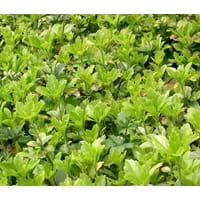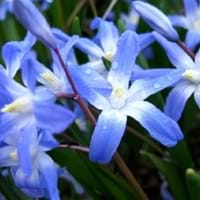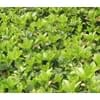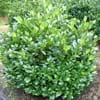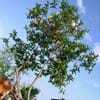Life Span
Perennial
Perennial
Type
Broadleaf Evergreen
Bulb or Corm or Tuber
Origin
China, Japan
Mediterranean, Turkey
Types
Pachysandra procumbens, Pachysandra terminalis
Pale glory-of-the-snow , Cretan glory-of-the-snow , Forbes' glory-of-the-snow , Loch's glory-of-the-snow
Habitat
Deep, Hardwood forests, moist forests, Terrestrial
Mediterranean region
USDA Hardiness Zone
4-8
3-9
AHS Heat Zone
Not Available
9-1
Habit
Prostrate/Trailing
Clump-Forming
Flower Color
White
White, Blue, Pink, Violet
Flower Color Modifier
Bicolor
Bicolor
Fruit Color
Not Available
Not Available
Leaf Color in Spring
Dark Green
Green
Leaf Color in Summer
Dark Green
Light Green
Leaf Color in Fall
Dark Green
Several shades of Green
Leaf Color in Winter
Dark Green
Light Green
Leaf Shape
Toothed
Long Linear
Plant Season
Spring, Summer, Fall, Winter
Spring, Winter
Sunlight
Partial shade, Full Shade
Full Sun, Partial Sun
Growth Rate
Medium
Medium
The pH of Soil
Acidic, Neutral
Acidic, Neutral, Alkaline
Soil Drainage
Well drained
Well drained
Bloom Time
Late Spring, Early Summer
Early Spring, Late Winter
Tolerances
Not Available
Drought
Where to Plant?
Ground
Ground, Pot
How to Plant?
Rooted stem cutting, Seedlings, Stem Cutting
Divison, Seedlings
Plant Maintenance
Medium
Medium
Watering Requirements
Needs more water during establishment
Medium
In Summer
Lots of watering
Lots of watering
In Spring
Moderate
Moderate
In Winter
Average Water
Average Water
Soil pH
Acidic, Neutral
Acidic, Neutral, Alkaline
Soil Drainage Capacity
Well drained
Well drained
Sun Exposure
Partial shade, Full Shade
Full Sun, Partial Sun
Pruning
Remove damaged leaves, Remove dead branches, Remove dead leaves
Remove damaged leaves, Remove dead branches, Remove dead leaves
Fertilizers
All-Purpose Liquid Fertilizer
All-Purpose Liquid Fertilizer
Pests and Diseases
Alternaria leaf blight, Red blotch, Stem rot
Pests and diseases free
Plant Tolerance
Drought
Deer resistant, Drought
Flowers
Insignificant
Showy
Flower Petal Number
Single
Single
Foliage Texture
Medium
Fine
Foliage Sheen
Glossy
Matte
Attracts
Ants, pollinators
Butterflies
Allergy
allergic reaction
Unknown
Aesthetic Uses
Ground Cover, Mass in beds, slopes
along a porch, deck or patio, Cottage Garden, Mixed Border, Showy Purposes
Beauty Benefits
Not Available
Not Available
Environmental Uses
Air purification
Air purification
Part of Plant Used
Fruits
Not Available
Other Uses
Planted in shelterbeds, Showy Purposes, Used for bedding in gardens
Unknown
Used As Indoor Plant
Yes
No
Used As Outdoor Plant
Yes
Yes
Garden Design
Edging, Groundcover
Alpine, Container, Foundation, Lawns and Turf, Mixed Border, Rock Garden / Wall, Wildflower
Botanical Name
PACHYSANDRA terminalis
CHIONODOXA
Common Name
japanese spurge, japanese pachysandra, carpet box
Chionodoxa, Glory-of-the-Snow
In Hindi
pachysandra
Chionodoxa
In German
Ysander
Ruhm des Schnees
In French
pachysandra
gloire de la neige
In Spanish
Pachysandra
gloria de la nieve
In Greek
Pachysandra
glory-of-the-snow
In Portuguese
Pachysandra
glória da neve
In Polish
Runianka
chwała śniegu
In Latin
Pachysandra
glory of the snow
Phylum
Vascular plant
Vascular plant
Order
Buxales
Asparagales
Family
Buxaceae
Liliaceae
Genus
Pachysandra
Chionodoxa
Clade
Angiosperms, Eudicots
Angiosperms, Monocots
Tribe
sarcococceae
Not Available
Number of Species
Not Available
Properties of Pachysandra and Glory of the Snow
Wondering what are the properties of Pachysandra and Glory of the Snow? We provide you with everything About Pachysandra and Glory of the Snow. Pachysandra doesn't have thorns and Glory of the Snow doesn't have thorns. Also Pachysandra does not have fragrant flowers. Pachysandra has allergic reactions like allergic reaction and Glory of the Snow has allergic reactions like allergic reaction. Compare all the properties and characteristics of these two plants. Find out which of these plant can be used as indoor plant. If you are interested to decorate your house and garden, find out aesthetic uses, compare them and select the plant which will beautify your surrounding. Along with beautification, try comparing medicinal and edible uses of Pachysandra and Glory of the Snow and you can choose the plant having best and most benefits.
Season and Care of Pachysandra and Glory of the Snow
Season and care of Pachysandra and Glory of the Snow is important to know. While considering everything about Pachysandra and Glory of the Snow Care, growing season is an essential factor. Pachysandra season is Spring, Summer, Fall and Winter and Glory of the Snow season is Spring, Summer, Fall and Winter. The type of soil for Pachysandra is Loam and for Glory of the Snow is Loam while the PH of soil for Pachysandra is Acidic, Neutral and for Glory of the Snow is Acidic, Neutral, Alkaline.
Pachysandra and Glory of the Snow Physical Information
Pachysandra and Glory of the Snow physical information is very important for comparison. Pachysandra height is 6.00 cm and width 60.00 cm whereas Glory of the Snow height is 10.20 cm and width 5.10 cm. The color specification of Pachysandra and Glory of the Snow are as follows:
Pachysandra flower color: White
Pachysandra leaf color: Dark Green
Glory of the Snow flower color: White, Blue, Pink and Violet
- Glory of the Snow leaf color: Green
Care of Pachysandra and Glory of the Snow
Care of Pachysandra and Glory of the Snow include pruning, fertilizers, watering etc. Pachysandra pruning is done Remove damaged leaves, Remove dead branches and Remove dead leaves and Glory of the Snow pruning is done Remove damaged leaves, Remove dead branches and Remove dead leaves. In summer Pachysandra needs Lots of watering and in winter, it needs Average Water. Whereas, in summer Glory of the Snow needs Lots of watering and in winter, it needs Average Water.
